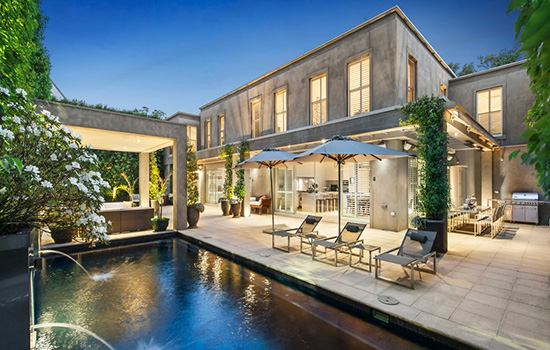The dos & don’ts when considering a backyard reno
Australians love renovating, and they love spending time outdoors. So it would make sense that they’d be good at outdoor renovations, right?
According to Matt Leacy, Director and Landscape Designer at Landart Landscapes, a lot of renovators actually swallow up all their funds during the main build of the home, hoping they can just “wing it” when it comes time to do the garden. Unfortunately for most people, this doesn’t always work out.
With that in mind, Leacy shares his top tips when approaching an outdoor reno.
Do:
Consider landscaping from the outset
If you’re planning a home renovation, it’s advisable to consider landscaping from the beginning.
Today’s home needs to relate to its outdoor space. That includes areas like your driveway and pedestrian entrance, which are both outside.
“Outdoor space is considered with most good architecture, but can be enhanced with good landscaping design,” Leacy says.
“The inside needs to flow and connect to the outside.” “You should naturally drift into an (indoor) space to another (outdoor) space. Unless they’re designed together this is very difficult to achieve.”
Leacy works closely with architects and says it can work to the architect’s advantage to have a landscaper involved from the beginning of a renovation project.
“If you collaborate well as a team you can get a really good result for the whole site.”
Factor in every detail
The more you consider in the planning stage, the smoother your renovation will run. It will save you money too, Leacy says.
“It’s a lot cheaper to draw and correct something than to build and correct something,” he says.
A lot of landscaping in built underground – things like light fixtures, plumbing and irrigation.
“If you don’t consider these details from the beginning, it’ll end up costing you more in the end.”
Reserve budget for landscaping
Leacy says he’s seen too many renovators blow all their budget on the main build of the house and leave nothing for landscaping, which can leave the finished product looking, well, unfinished.
“Architecture can look good on its own but it looks even better with a garden that is designed to compliment and enhance it,” Leacy says.
“It’s really evident when people have spent all their money on the build.
“Why not just make a realistic budget and hold onto it?”
Work with your environment, not against it
It’s important to work with what you have, and design around it. A sloping backyard, for example, can be a huge asset.
“If you’ve got a sloping yard, work with the levels and use them to your advantage,” Leacy says.
In a Terrey Hills property he designed recently, Leacy used the pool to level the backyard.
“It created a nice point of difference but also sunk the entertaining area so it was more private and intimate.”
Use lighting to make the most of the yard
If you’re going to put a lot of work into your garden, you want to be able to appreciate it at any time of the day.
Outdoor lighting sets of the tones and depths of your garden, creating a mood at night.
“You’ll use the area more than you would if you didn’t have lights.”
Don’t:
Take a piecemeal approach
You may think breaking up the components of your backyard renovation will save your time, dollars and sanity – but Leacy says the opposite.
“Don’t break up all the components and try to project manage it yourself. It will most likely cost you money if you’re not experienced,” he says.
“Get reputable people (to help you) and trust their advice.”
Forget about saleability
The backyard is not only important for livability – with most Australians using the backyard almost as much as their house – but also for saleability.
“The pool is often used as the hero shot of a real estate ad,” Leacy says.
In the summer months, the outdoor room is the entertaining hub of the home. Think of it as part of the house, says Leacy.
“If you do, you’ll get as good a result as you’d get with the house, or better.”
Fail to get approvals
In New South Wales, you need permission from council to build a retaining wall higher than 600mm from ground level.
But Leacy says there is a lot of landscaping work you can do under complying development, which means going through a private certifier as opposed to going through the council.
Under complying development your options include pools, decks, pavilions.If you fail to take a development application under council or through a private certifier, you could be forced to remove the work and/or be hit with a fine.
“I’ve seen a million scenarios where people have plonked a pool there because the pool installers told them too, but then it’s in the wrong position and it’s too late.”
We found this great article on www.realestate.com.au and had to share!



